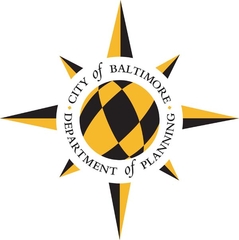Draft 2023 Disaster Preparedness and Planning Project (DP3) Update
The Disaster Preparedness and Planning Project (DP3) is Baltimore’s combined hazard mitigation plan and climate adaptation plan. After an extensive stakeholder engagement + technical analysis process, the Draft 2023 DP3 Update is ready for public comment. Please write your comments directly in the documents as you read through them. There are 16 sections of the plan which can be easily navigated using the dropdown on the top left of the page or the arrows at the bottom.
Hazard mitigation is the process of developing strategies that will reduce or eliminate loss of life and/or property damage resulting from natural hazard events. The 2023 DP3 Update identifies the natural hazards the City faces and assesses the potential risks and vulnerabilities associated with those hazards. It also addresses how climate change is expected to make many of the natural hazards Baltimore faces more dangerous and unpredictable. Regardless of how quickly or stringently cities are able to reduce greenhouse gas (GHG) emissions, impacts related to climate change will continue to be felt, as disruptive events become more frequent and intense.
The DP3 is a unique plan chock full of opportunities as it fulfills Federal Emergency Management Agency (FEMA) requirements to update the city’s Hazard Mitigation Plan every 5 years to maintain eligibility for certain pre-disaster mitigation and post-disaster recovery funds. This funding, in addition to other funding sources, supports the implementation of the strategies and actions identified in the plan to help Baltimore become more resilient to disasters.

Comments
Close